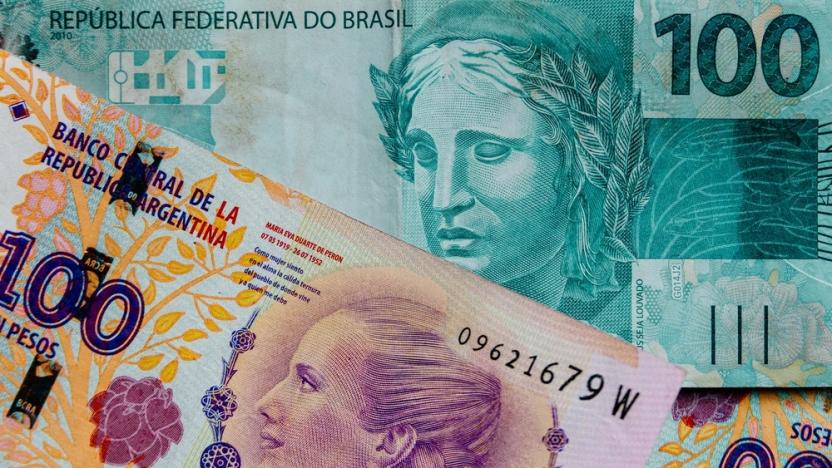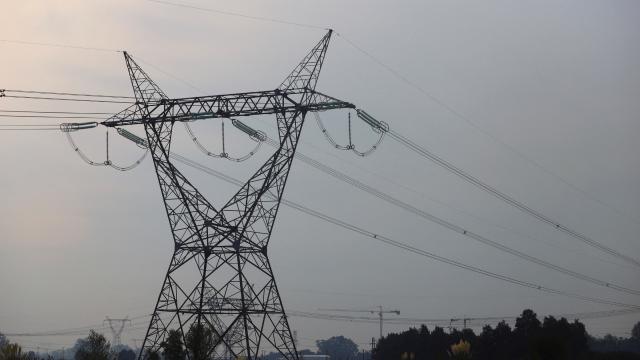Brazil has just held an election in which Luiz Inácio Lula da Silva, a leftist leader, replaced the right-wing leader Jair Bolsonaro. Although this stirring election ended with Bolsonaro leaving the country, today’s article will be based on a meeting between two leftist leaders and two of the biggest trading partners of the South American continent: Alberto Fernandez, President of Argentina and Inácio Lula da Silva, President of Brazil.
Despite strained relations due to the Bolsonaro administration’s aggressive stance towards Argentina and other countries on the continent (Venezuela, Cuba, etc.), Lula da Silva did not break with tradition by choosing to pay his first visit to Argentina, one of his biggest trading partners. Argentine-Brazilian trade relations, which reached $26.4 billion last year, continue to increase, and in this regard, the two presidents have announced that they are considering the idea of a common “Currency” just like the “CAF Franc” or the “Euro”.
The idea was first put forward by Lula da Silva’s chief of staff, Finance Minister Fernando Haddad and his secretary Gabriel Galipolo, and was mentioned in Lula da Silva’s election program.
In the discussions that accompanied the joint statement, it was revealed that the main lines of the issue were “the concern to reduce costs and advance integration across the continent with a common currency” and “to eliminate the vulnerabilities of the economies of the continent against external economic factors by strengthening the union”.
Expectations are that this union and organization established between Argentina and Brazil will be joined by South American and Caribbean countries and that the union will form a “Monetary Area” covering the entire continent.
Lula da Silva’s visit also marks Brazil’s return to the Community of Latin American and Caribbean States (CELAC), from which Brazil left under Bolsonaro’s directive. If this scenario were to materialize in the near future, it would prove the concerns of “Economic Integration” and a “Common Currency” under a union.
If the idea of this union, which includes the concepts of “Integration” and “Common Currency“, is realized, the union will be the second largest monetary union in the world after the EU., and the world would integrate a new union into its system. While the EU commands 14% of world GDP, this new “South American Union” would command 5% of world GDP.
Concerns about Integration and the Common Currency;
Although Brazil, the continent’s largest economy, had aspired to this goal in 2018, it had to abandon this idea due to a dissenting opinion from its Central Bank. On paper, the concern of cooperating on a common “Currency” with its neighbor Argentina, which has a persistently high inflation graph and a volatile market that is difficult to predict, will be one of the difficult questions for Brazilian economic policy-makers. Argentina still remains in difficult economic cycles with high inflation averages and is unable to bring its markets to a point of “equilibrium”. Argentina has more than $40 Billion in active debt to the IMF due to the 2020 National Debt Default. Argentina’s high debt and unstable markets could pose a number of problems for economic integration, such as high integration costs for public and private banks in both countries, as well as bottlenecks in the supply of investment funding.
Although the new “South American Union“, which is on paper and still unnamed, has chosen the “European Union” as its idol, the Euro has only been the product of a 35-year transition period and this “Monetary Union” has experienced many “small breaks” during the 2020 Covid-19 Pandemic following the 2008 Crisis. Many Central European and Eastern European countries have moved away from the “Maastricht Criteria” and far exceeded the limits that the Union had generally accepted. This damaged the economy of the European Union in general and the common currency, the “Euro”. In the “South American Union” scenario, “Venezuela”, which is in a worse situation than Argentina and has a volatile economy, and Central American countries with low trade volumes and economies could have the same effects and put pressure on the major economies of the SAU. I call this effect the “Locomotive Effect“, where the top two or three economies in a community of countries that have entered the Union tend to reflexively fund the “smaller” countries in the Union in a good way and cover their economic deficits. I will deal with this idea in a future article on “Economic Unions”, separating it from the familiar “Locomotive Effect”, if it makes sense of course!
Finally, the countries of South America, which are constantly concerned with political disintegration, bring with them a problem. In this geography, where political ideologies of different views find room for movement, concepts such as “Integration” and “Union” constantly find obstacles in the light of these risks.
Conclusion;
The presidents of the two countries have announced that they are working on the idea of a common “Currency” just like the “CAF Franc” or the “Euro”.
The main lines of the issue were revealed to be “the concern to reduce costs and advance integration across the continent with a common currency” and “to eliminate the vulnerability of the continent-wide economies against the outside world by strengthening them with unity”.
While the EU accounts for 14% of world GDP, this new “South American Union” will account for 5% of world GDP and will be the second largest “Monetary Union” in the world.
One of the difficult questions for Brazil’s economic leaders will be the concern of cooperating on a common “Currency” with its neighbor Argentina, which on paper has a volatile and unpredictable market with a persistently high inflation rate.
Argentina’s high debt and unstable markets could pose a series of problems for the public and private banks of both countries at the point of economic integration, such as high integration costs and bottlenecks in the supply of investment funding. This would undermine the ongoing “bilateral” process.
Note: The definition of the South American Union (SAU) is used entirely by the author. It is not official and is a shorthand term.
Best Regards and Wishes
Ozan
Bibliography;
Financial Times ; “Brazil and Argentina to Start Preparations For a Common Currency” https://www.ft.com/content/5347d263-7f24-4966-8da4-79485d1287b4
Reuters ; “Brazil and Argentina to Discuss Common Currency” https://www.reuters.com/markets/currencies/brazil-argentina-begin-preparations-common-currency-ft–2023-01-22/
Mahfi Eğilmez ; “Maastricht Yakınlaşma Kriterleri Karşısında Avrupa’nın Güncel Durumu”
https://www.mahfiegilmez.com/2021/11/maastricht-yaknlasma-kriterleri.html





